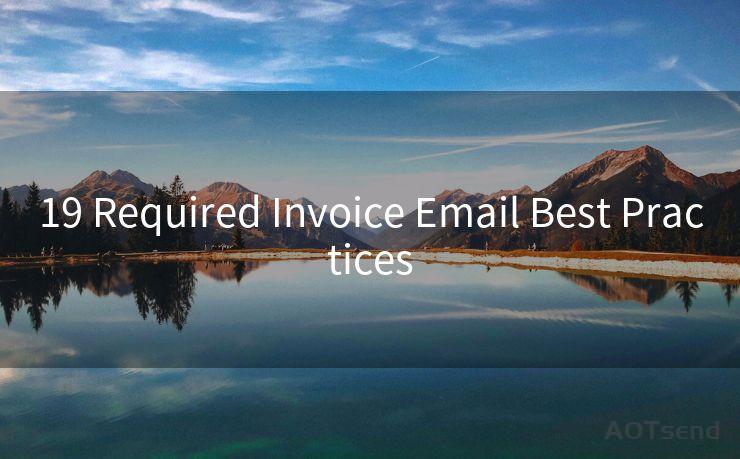19 Required Invoice Email Best Practices




When it comes to business transactions, invoices play a crucial role. Sending invoice emails is a common practice, but there are certain best practices that can ensure clarity, professionalism, and efficiency. Here are 19 essential best practices for invoice emails that you should follow for effective communication.
1. Clear and Concise Subject Line
Start with a clear and concise subject line that immediately informs the recipient about the content of the email. For example, “Invoice for [Service/Product] – [Invoice Number]”.

2. Professional Greeting
Begin your email with a professional greeting, addressing the recipient by name if possible. This helps to establish a personal connection and sets the tone for the rest of the communication.
3. Introduction to the Invoice
Provide a brief introduction to the invoice, stating the purpose of the email and the services or products that are being invoiced.
4. Detailed Invoice Information
Include all the necessary invoice details such as invoice number, date, services or products provided, quantities, prices, and the total amount due. Ensure that this information is accurately presented and easy to understand.
5. Payment Terms and Conditions
Specify the payment terms and conditions, including the payment deadline, accepted payment methods, and any late payment penalties. Clarity on these terms helps to avoid any confusion or disputes.
6. Attach the Invoice
Always attach the invoice document in a commonly used and easily accessible format like PDF. This ensures that the recipient can view and print the invoice if needed.
7. Contact Information
Provide your contact information, including your name, email address, and phone number, in case the recipient has any questions or concerns regarding the invoice.
8. Thank You Note
End your email with a thank you note, acknowledging the recipient’s business and expressing appreciation for their payment.
9. Call to Action
Include a clear call to action, asking the recipient to review the invoice and make the payment by the specified deadline.
10. Avoid Unnecessary Details
Keep your email focused and avoid including unnecessary details that may distract the recipient from the main message.
11. Use a Professional Tone
Maintain a professional tone in your email, avoiding colloquial language or informal greetings.
12. Proofread and Edit
Always proofread and edit your email before sending it to ensure that there are no grammatical errors or typos.
13. Follow Up
If payment is not received by the deadline, send a follow-up email to inquire about the status of the payment.
14. Use Templates
Consider using templates for your invoice emails to maintain consistency and save time.
15. Branding
Include your company’s logo and branding elements to enhance professionalism and recognition.
16. Security
Ensure that your email and attachments are secure, especially if they contain sensitive information.
17. Mobile-Friendly Format
Optimize your email for mobile devices to cater to recipients who may be checking their emails on the go.
18. Comply with Legal Requirements
Make sure your invoice emails comply with any legal requirements or regulations applicable to your industry or region.
19. Test and Refine
Regularly test and refine your invoice email practices to ensure maximum effectiveness and customer satisfaction.
By following these 19 best practices for invoice emails, you can ensure clear, professional, and efficient communication with your clients or customers. Remember to tailor your emails to suit your specific business needs and audience, and always strive for clarity and simplicity in your messaging.




🔔🔔🔔
【AOTsend Email API】:AOTsend is a Managed Email Service for sending transactional emails. Support Email Types: reminders, authentication, confirmations, notifications, verification codes, invoices, password resets, account activations, billing statements, two-factor authentication (2FA), and one-time passwords (OTP) emails, etc. $0.28 per 1000 Emails. 99% Delivery, 98% Inbox Rate.
You might be interested in:
Why did we start the AOTsend project, Brand Story?
What is a Managed Email API, How it Works?
Best 25+ Email Marketing Platforms (Authority,Keywords&Traffic Comparison)
Best 24+ Email Marketing Service (Price, Pros&Cons Comparison)
Email APIs vs SMTP: How they Works, Any Difference?
Scan the QR code to access on your mobile device.
Copyright notice: This article is published by AotSend. Reproduction requires attribution.
Article Link:https://www.mailwot.com/p4677.html



